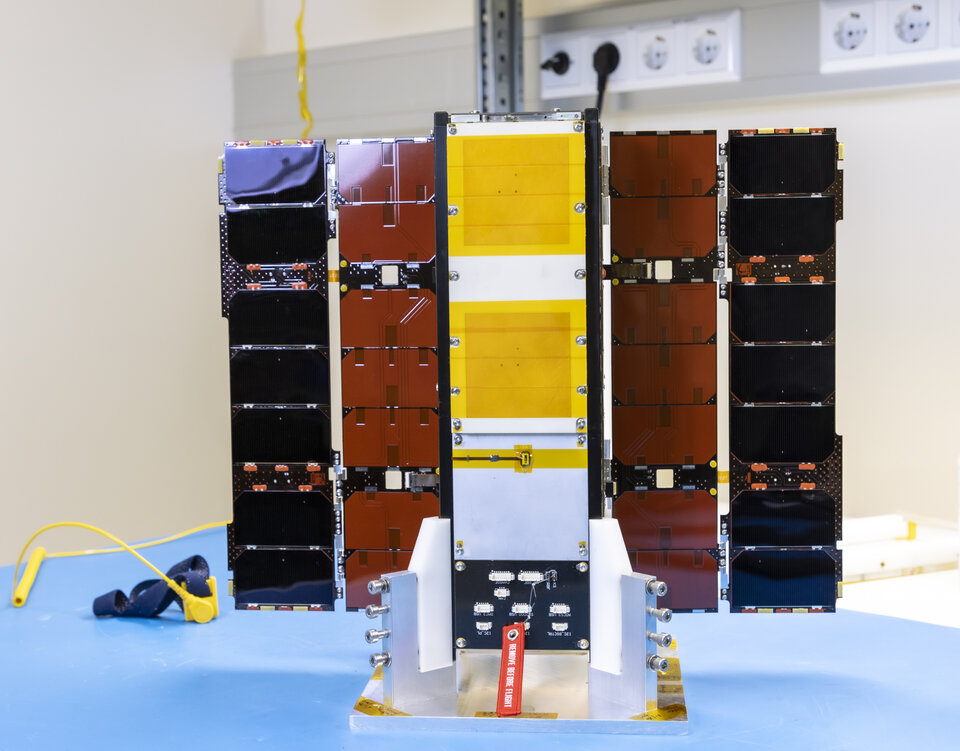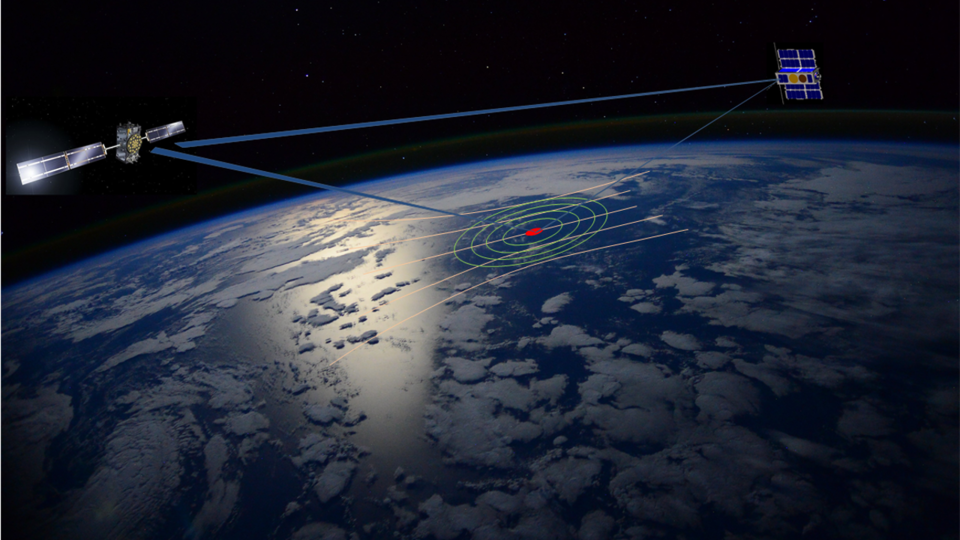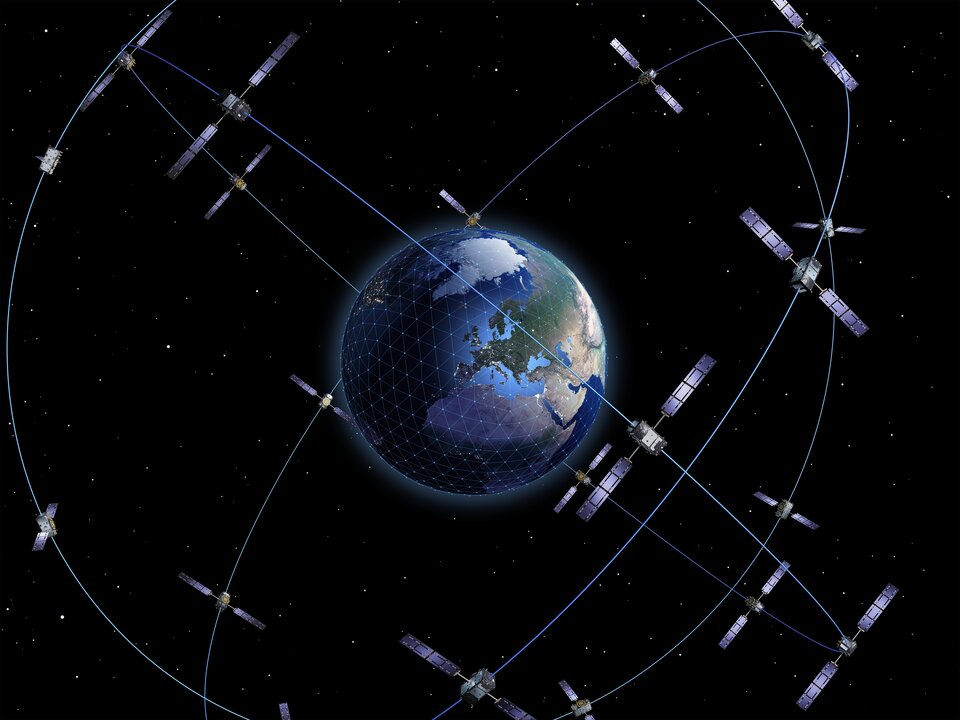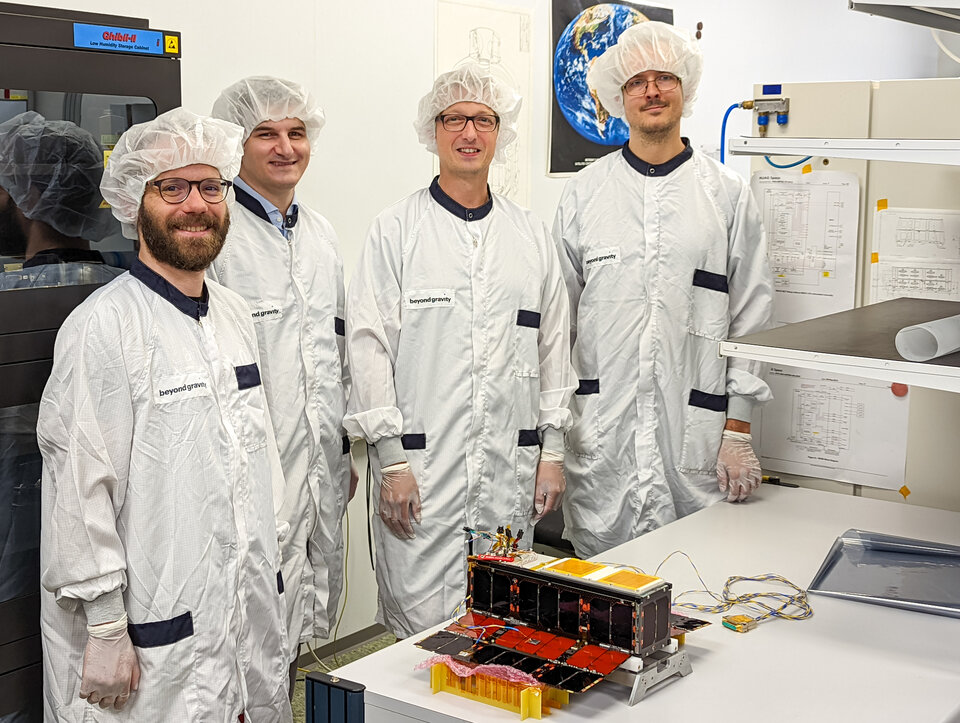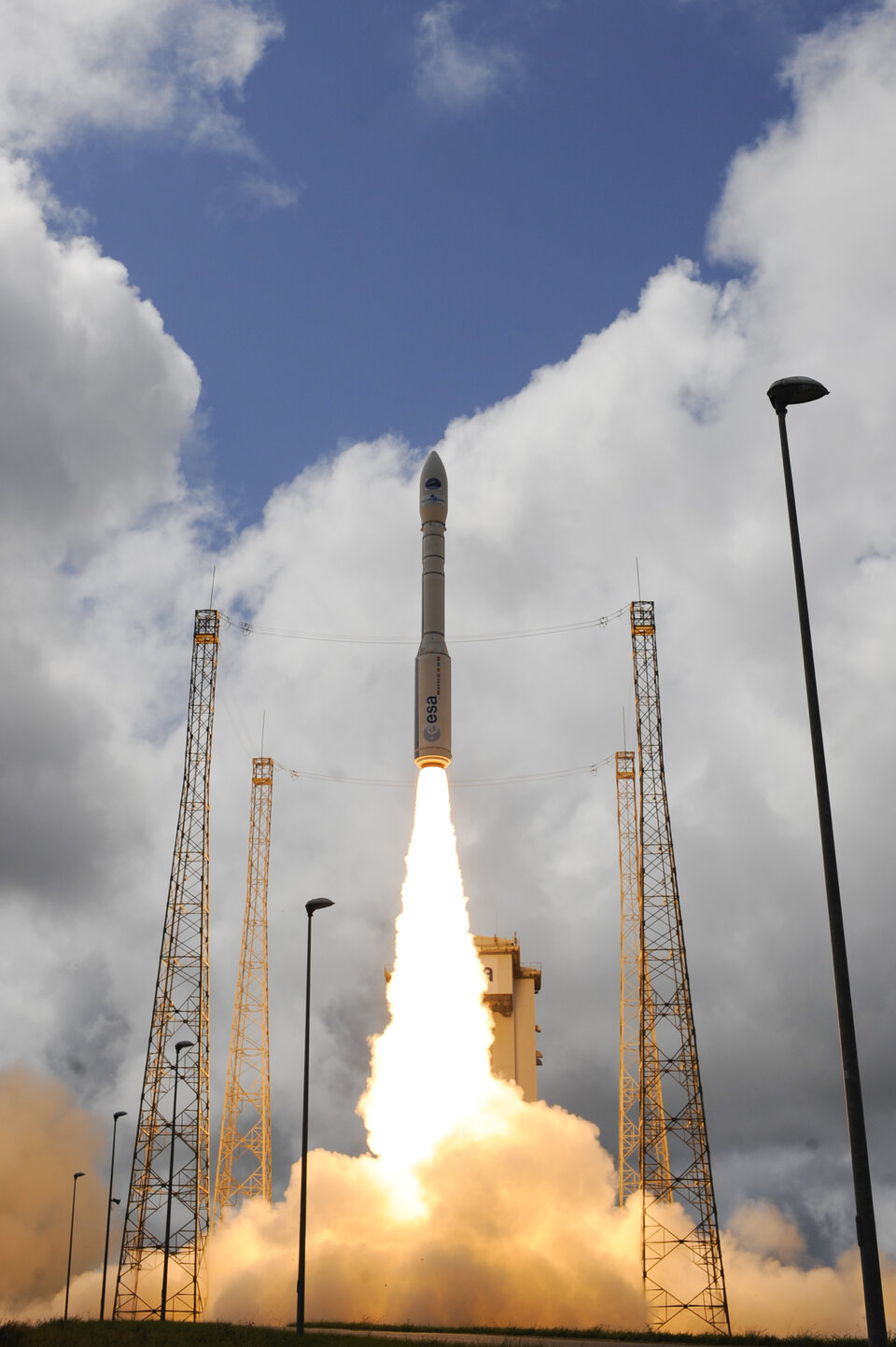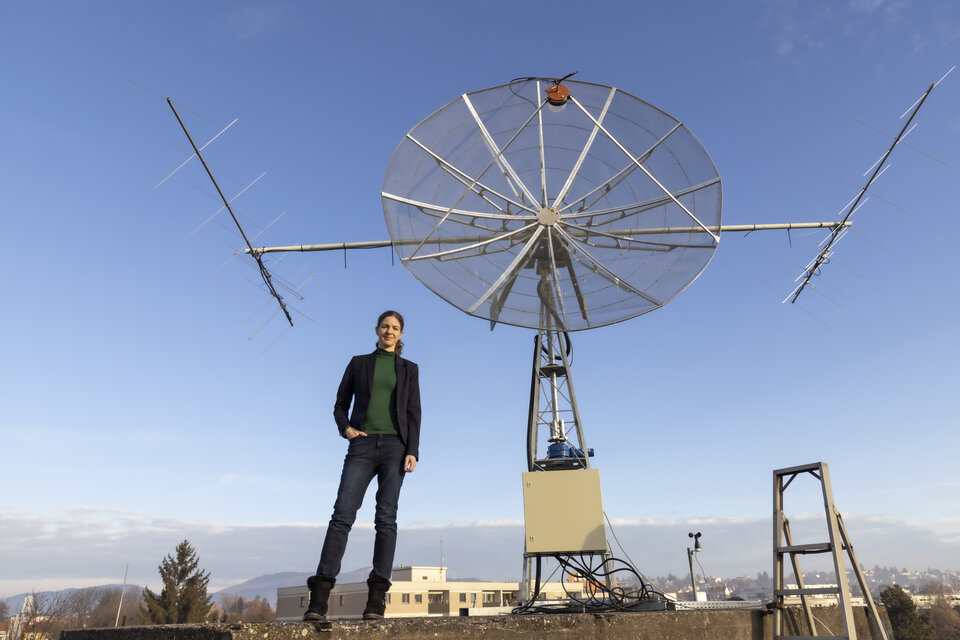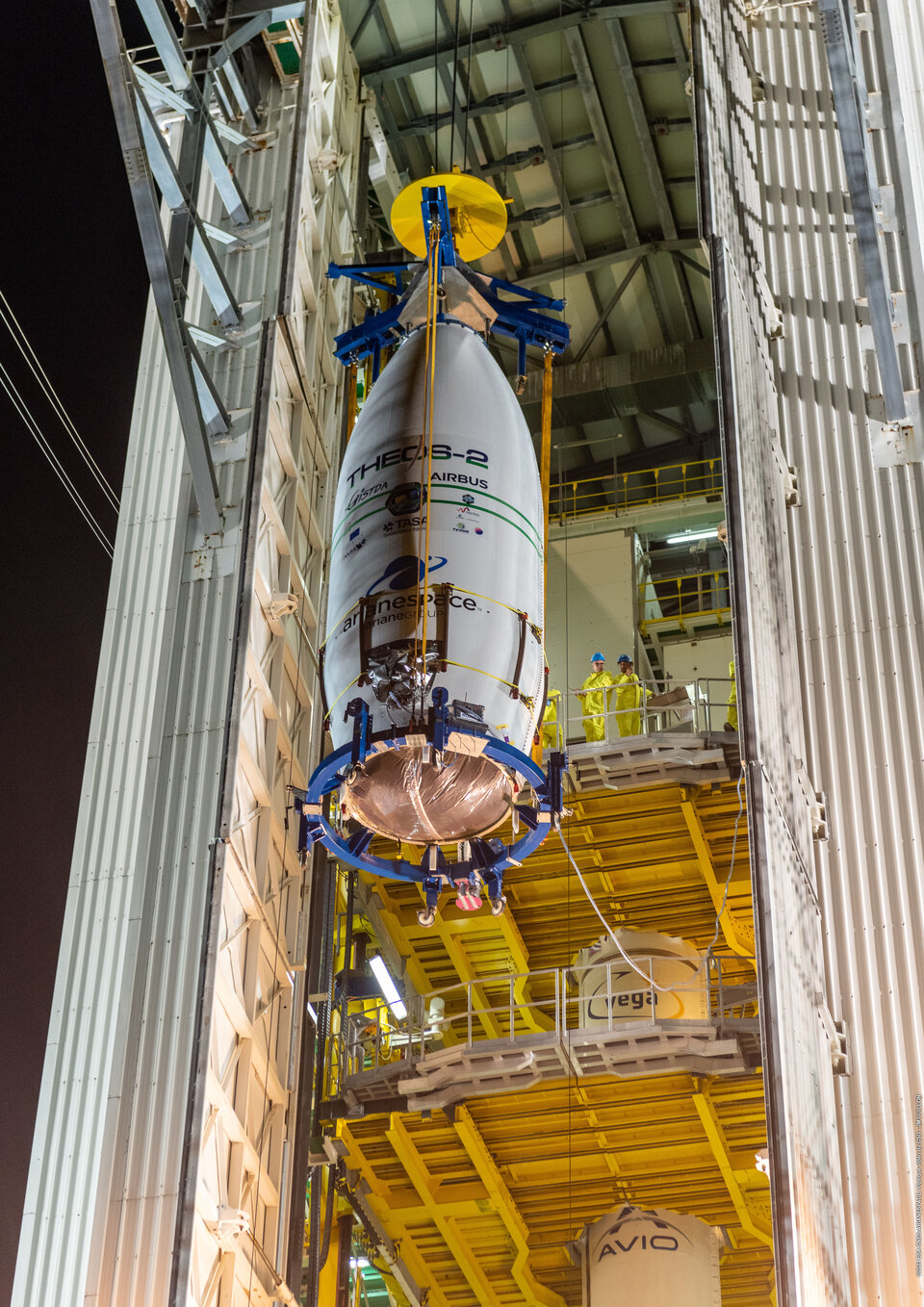Earth is being continuously bathed in radio signals from satellite navigation (satnav) satellites, which are useful for far more than navigation. Dedicated space missions acquire these signal reflections to collect valuable environmental information. The shoebox-sized PRETTY CubeSat, flying on Europe’s Vega launcher, will investigate a new frequency and novel observation angle to better measure the rate of climate change — at the same time, gathering radiation data on the surrounding space environment.
The PRETTY (Passive REflecTometry and dosimeTrY) mission will peer ahead to the horizon to receive signals from Global Navigation Satellite System (GNSS) satellites visible just above it. Two patch antennas on its forward face will pick up the same signal from the same satellite, or rather one signal that has reached it through space, and the equivalent signal that has reflected off Earth’s cryosphere or oceans.
Using a highly advanced version of ‘spot the difference,’ PRETTY will compare the twin signals onboard to derive ice and sea height to an accuracy of at least 50 cm from a 550 km orbital altitude.
Meanwhile, a miniaturized dosimeter will be tracking the CubeSat’s ongoing radiation exposure, amassing data which will help ensure the reliability and sustainability of future smallsats.
Environmental data from reflected satnav
ESA radiometer engineer Manuel Martin Neira (photo below) was the original inventor of the GNSS ‘reflectometry’ concept.
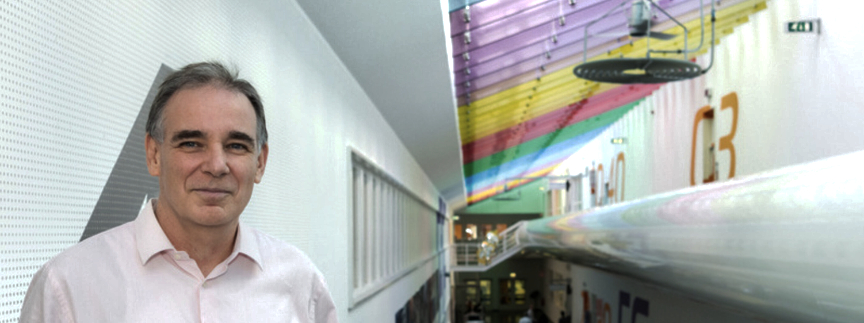
This concept is in active use today by numerous missions worldwide to acquire comparatively-low-cost altimetry and scatterometry-based wind and wave data.
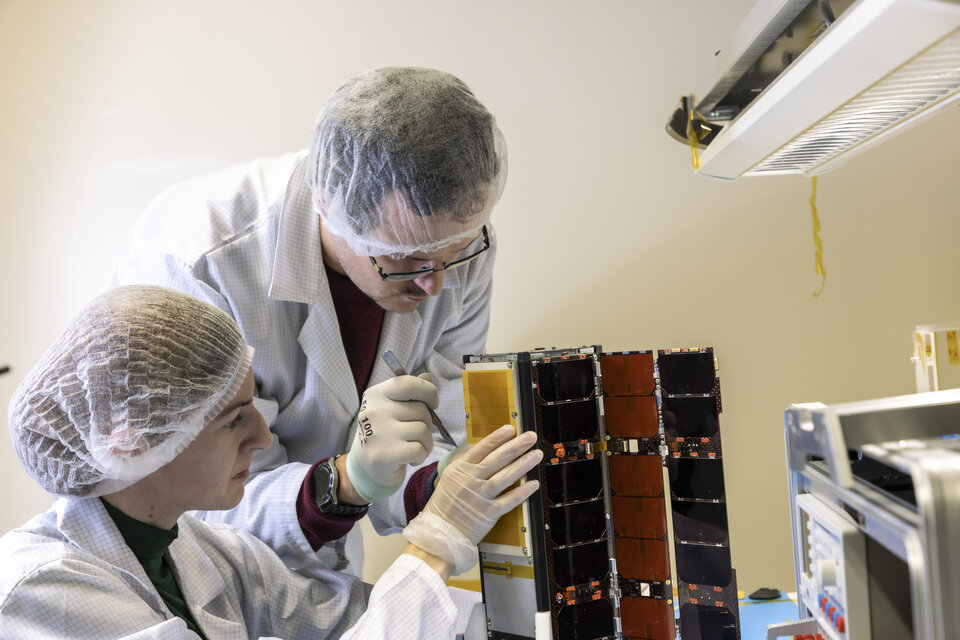
Neira explained that PRETTY incorporates some important innovations and said, “Existing reflectometry missions look straight down, but such a vertical geometry gives rise to a very rough sea surface. By peering down at a shallow angle the sea appears smoother – akin to the way that Venetian blinds can variously appear open or closed, depending on the angle that you observe them. The result is that reflected GNSS signals remain more coherent in turn. In addition, PRETTY is making use of a new GNSS frequency for the first time, employing the longer-wavelength E5/L5 as transmitted by European Galileo and US GPS satellites. The PRETTY team made this change late in mission development, guided by ground testing that showed superior accuracy using this frequency band.”
“The custom-made antenna needed for the reflectometry in E5/L5 also enables what is called beam forming, a technique allowing the payload to actively and simultaneously track the direct and reflected signal coming from the GNSS satellites, further increasing the scope of the technology demonstration.” — Camille Pirat, system engineer in ESA’s CubeSat Systems Unit and PRETTY Technical Officer
All-Austrian team
Funded through ESA’s General Support Technology Program by Austria, PRETTY has been developed by an all-Austrian consortium, with Beyond Gravity Austria as prime contractor developing the reflectometry payload.
“Beyond Gravity worked with Manuel to develop the reflectometry processing core being flown on PRETTY through a previous ESA project. Next, we looked for a flight opportunity – initially we hoped for the International Space Station or else to fit aboard the OPS-SAT CubeSat overseen by TU Graz. Then the success of OPS-SAT led us to consider a dedicated CubeSat mission. In fact PRETTY ended up as Beyond Gravity’s first CubeSat. For me, the most scientifically exciting places to observe are going to be the poles, because it’s really there that we’re likely to see the most change in surface height over the planned one-year lifetime of the mission – although in practice we hope to continue for longer.” — Andreas Dielacher, system engineer at Beyond Gravity
Additionally, Seibersdorf Laboratories contributing a radiation dosimeter payload and Technical University of Graz serving as overall system integrator and operator.
Intensive computation
CubeSats are small, inexpensive satellites that are built from standardized 10 cm boxes, hosting all of the necessary necessary systems as well as mission payloads. In PRETTY’s case, the CubeSat’s processing core works in combination with the patch antennas and a software derived radio, offering added flexibility during the post-launch commissioning phase.
“We will actually employ two methods of correlating the original and reflected signals. The first is the standard technique making use of the code embedded in the signal. The second is by making use of the higher-frequency satnav signals themselves, directly comparing their differing signal phases through a method called ‘interferometry.’ This latter method is more computationally demanding, requiring a lot of power and producing waste heat. This being so, we will typically perform two observation sessions of a maximum half an hour each per day, resting in the meantime to downlink results to our ground stations and allow heat to dissipate. And typically we will observe during local twilight or night. Avoiding heat from sunlight gives our receiver a better signal to noise ratio.” — Andreas Johann Hörmer, managing the mission at TU Graz
A scientific consortium is waiting to make use of PRETTY’s altimetry and also scatterometry data, coordinated by Norwegian University of Science and Technology.
Radiation mapper
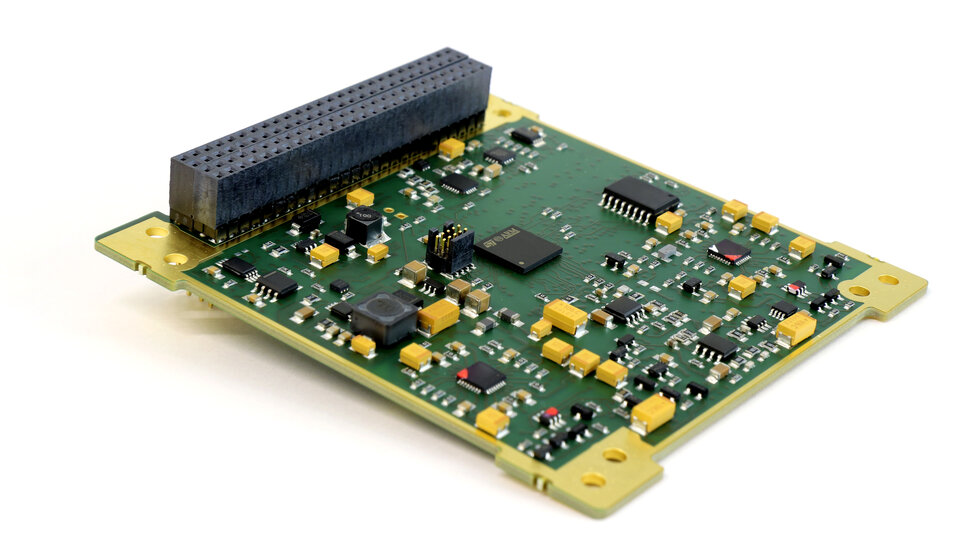
“Analyzing observed radiation effects using SATDOS enables us to make informed assessments of ongoing space weather and the reliability of satellite electronics – thereby contributing to the sustainability of future space missions, especially smaller ones.” — Christoph Tscherne, PRETTY project manager at Seibersdorf Laboratories
PRETTY has been supported through the Fly element of ESA’s GSTP, aiming to provide early space testing of innovative technologies.

